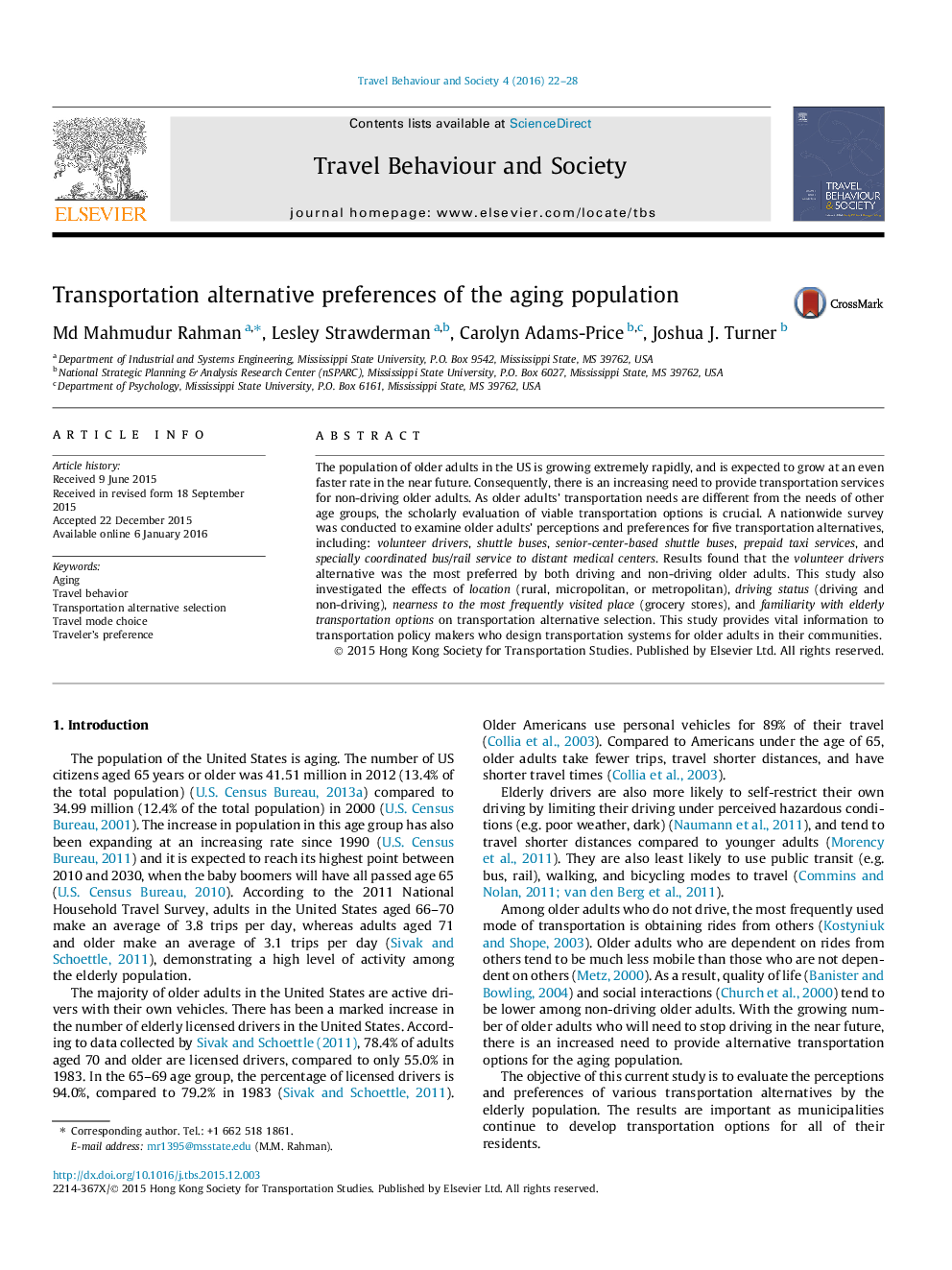| Article ID | Journal | Published Year | Pages | File Type |
|---|---|---|---|---|
| 141294 | Travel Behaviour and Society | 2016 | 7 Pages |
•Five transportation alternatives were presented to older adults.•Of the five alternatives, the volunteer drivers alternative was the most preferred.•Non-driving adults rated the alternatives less favorably than driving adults.•Results confirmed the impact of location on alternative preferences.
The population of older adults in the US is growing extremely rapidly, and is expected to grow at an even faster rate in the near future. Consequently, there is an increasing need to provide transportation services for non-driving older adults. As older adults’ transportation needs are different from the needs of other age groups, the scholarly evaluation of viable transportation options is crucial. A nationwide survey was conducted to examine older adults’ perceptions and preferences for five transportation alternatives, including: volunteer drivers, shuttle buses, senior-center-based shuttle buses, prepaid taxi services, and specially coordinated bus/rail service to distant medical centers. Results found that the volunteer drivers alternative was the most preferred by both driving and non-driving older adults. This study also investigated the effects of location (rural, micropolitan, or metropolitan), driving status (driving and non-driving), nearness to the most frequently visited place (grocery stores), and familiarity with elderly transportation options on transportation alternative selection. This study provides vital information to transportation policy makers who design transportation systems for older adults in their communities.
